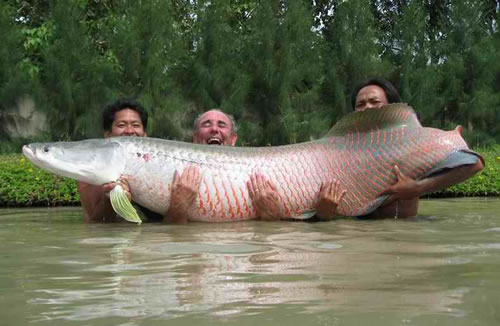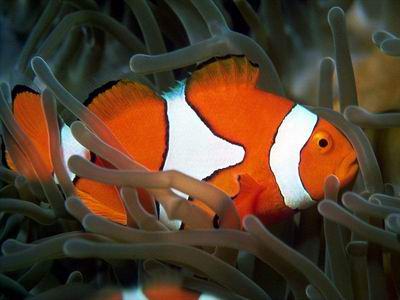

Oscar fish, or to give it its proper name, Astronotus Ocellatus is a species of fish from the Cichlid family. The Oscar fish is a South American Cichlid. They are piscivorous, which means they eat other fish, so care should be taken with what else you put in the tank. A section below "Fish Tankmates for Oscars" covers this in more detail.
Oscar fish body shape tend to be flat to the side with a wide dorsal and nearly meets the back. The size of the chest and abdomen dorsal medium, while the caudal fin slightly rounded.
Based on the color there are two kinds of Oscar fish, ie Oscar brown base color as in the photo below, and type of albino white. Brown Oscar has a body reddish brown or blackish with red, orange or golden yellow pattern adorned on the side of his body. While Oscar Albino has a white body with red or yellow pattern on the side of his body.
Brown Oscar with characteristic pattern-color of wide, strongly colored and has fins dark brown or black with red lines at the edges are classified as good-quality Oscar. Just as Oscar Brown, Oscar albino with a wide pattern is also very popular.
Today, there are several Oscar Fish Types available to the Oscar enthusiast. The most frequently found are (in alphabetical order) the Albino Oscar, Lemon Oscar, Lutino Oscar, Red Oscar, Tiger Oscar, and the Yellow Oscar.
Oscar fish are reasonably easy fish to crossbreeding and this has given us many varieties of Oscar fish types from the above list and adds more interest to the hobby.
The photo you see here is just one such cross breeds. This is an Albino Tiger Oscar fish obviously bread from an Albino Oscar and a Tiger Oscar and I think makes a very attractive variety.

Bear in mind that all these Oscar Fish types originate from the common Oscar and Cichlid fish family, native to the mighty South American rivers like the Amazon and the Orinoco. Due to breeders of Oscars we now have a greater selection to choose from.

Besides the color based, types of Oscar fish also distinguished by the size of the fin. Based on the fin's size , there are two kinds of Oscar. First is Oscar-Slayer with a long-finned and the second is a short finned Oscar.
Things you need to know about this fish, in normal conditions, Oscar fish behavior tends to calm. However, during feeding, while it is laying eggs, or feel disturbed, Oscar fish will be aggressive and fierce, so do not hesitate to bite anyone with his sharp teeth. Should be more careful when feeding or taking the Oscar fish eggs to avoid these fish bite.




































